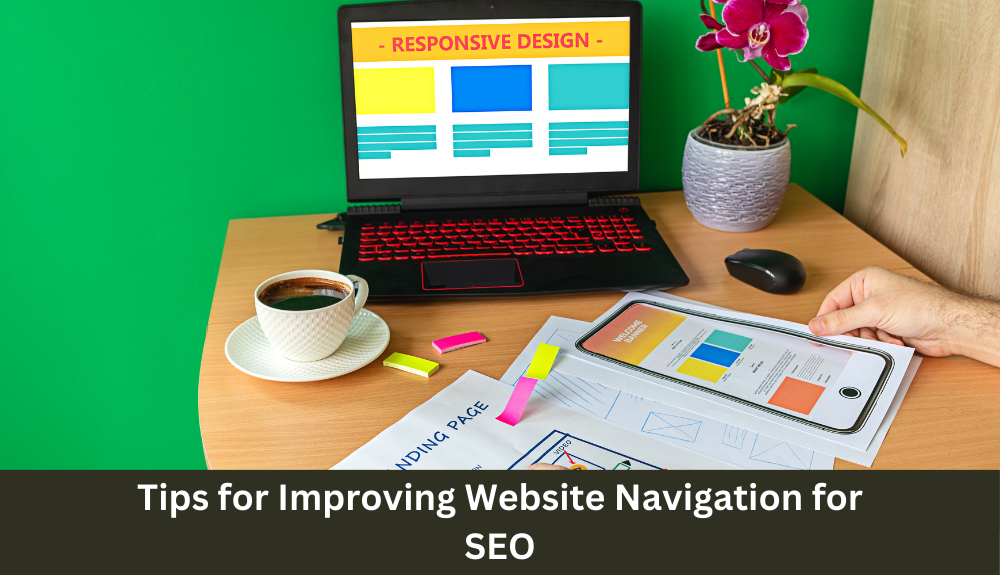Navigating a website should be as seamless as strolling through a well-designed city; each turn leading you precisely where you need to go. Just like in real life, easy navigation on a website is crucial for visitors to find what they’re looking for quickly and effortlessly. But did you know that effective website navigation doesn’t just enhance user experience; it also plays a significant role in boosting your site’s visibility and ranking on search engines? In this blog post, we’ll dive into the world of website navigation and explore how improving it can supercharge your SEO efforts.
Understanding the Basics of SEO
When it comes to understanding the basics of SEO, it’s essential to grasp that Search Engine Optimization is all about enhancing your website’s visibility on search engines like Google. This means optimizing your content and website structure to rank higher in search results pages.
Keywords play a significant role in SEO. These are the terms users type into search engines when looking for information. By incorporating relevant keywords strategically throughout your content, you can increase the chances of your website being discovered by potential visitors.
Quality content is another crucial aspect of SEO. Search engines prioritize websites that offer valuable, informative, and engaging content to users. Creating high-quality content not only improves your site’s ranking but also keeps visitors engaged and coming back for more.
In addition to keywords and quality content, factors like backlinks, site speed, mobile-friendliness, and user experience also impact SEO rankings. Understanding these fundamental aspects will help you lay a strong foundation for optimizing your website effectively.
How Website Navigation Impacts SEO
When it comes to SEO, website navigation plays a crucial role in determining the overall User Experience (UX) and SEO. An intuitive and well-structured navigation system can make it easier for visitors to find relevant content on your site. This not only improves user engagement but also signals to search engines that your website is organized and valuable.
On the other hand, poor navigation can lead to high bounce rates and low time-on-site metrics, which are red flags for search engines. If users struggle to navigate your site or get lost in a maze of confusing menus, it can negatively impact your SEO efforts.
By optimizing your website’s navigation with clear labels, logical hierarchies, and easy-to-find links, you can enhance the user experience and boost your chances of ranking higher in search results. Remember, good SEO isn’t just about keywords and backlinks – it’s also about providing a seamless browsing experience for your audience.
Tips for Improving Website Navigation for SEO

When it comes to improving your website navigation for SEO, there are several tips you can follow to enhance user experience and search engine visibility.
One effective tip is to utilize user-friendly menu designs that are easy to navigate and understand. Clear and concise menus can help visitors find the information they need quickly, reducing bounce rates and increasing time spent on your site.
Another important strategy is incorporating internal linking throughout your website. By linking relevant pages together, you not only improve navigation but also boost the authority of your content in the eyes of search engines.
Mobile responsiveness plays a crucial role in SEO today. Ensure that your website is optimized for mobile devices as more users access websites through smartphones and tablets.
By implementing these tips, you can create a seamless browsing experience for users while also enhancing your site’s SEO performance.
Utilizing User-Friendly Menu Designs
When it comes to improving website navigation for better SEO, one key aspect to focus on is utilizing user-friendly menu designs. Your website’s menu serves as a roadmap for visitors, guiding them through your content seamlessly.
A well-organized and intuitive menu design can enhance the user experience by making it easy for visitors to find what they’re looking for quickly. Consider using clear labels and logical categorization to help users navigate effortlessly.
Dropdown menus can be helpful in displaying a variety of options without cluttering the main navigation bar. Just ensure they are mobile-responsive and accessible on all devices.
Avoid overwhelming users with too many menu items. Keep it simple and streamlined to prevent decision fatigue and encourage exploration of your site.
Remember, a user-friendly menu design not only improves SEO by enhancing usability but also contributes to higher engagement rates and lower bounce rates. So, invest time in creating a visually appealing and functional menu that caters to your audience’s needs effectively.
Incorporating Internal Linking Strategies
Internal linking is a powerful SEO strategy that can significantly impact your website’s performance. By strategically linking relevant pages within your site, you can improve user experience and help search engines navigate your content more effectively.
When incorporating internal links, it’s essential to focus on relevance. Linking related topics together helps establish the context of your content and boosts keyword visibility across different pages.
Additionally, using descriptive anchor text for internal links provides both users and search engine crawlers with valuable information about the linked page’s content. This practice enhances the overall navigational structure of your website while also improving SEO rankings.
Remember to regularly audit and update internal links to ensure they are still relevant and functional. By maintaining a well-organized internal linking structure, you can enhance user engagement and increase the visibility of important pages on your site.
The Role of Mobile Responsiveness in SEO
In today’s digital age, mobile responsiveness plays a crucial role in enhancing SEO for websites. With the increasing number of users accessing the internet through mobile devices, search engines prioritize mobile-friendly websites in their rankings.
A website that is optimized for mobile not only provides a better user experience but also signals to search engines that it is relevant and up-to-date. This can lead to higher visibility in search results and increased organic traffic.
Having a responsive design ensures that your website adapts seamlessly to different screen sizes and resolutions, which is essential for capturing both desktop and mobile users. It helps reduce bounce rates and improves overall engagement metrics.
Additionally, Google has implemented mobile-first indexing, meaning it primarily uses the mobile version of a site for ranking and indexing. Therefore, having a responsive website is no longer just an option but a necessity for SEO success. Optimizing for Mobile Responsiveness
Measuring the Success of Improved Website Navigation

Measuring the success of improved website navigation is crucial for understanding the impact it has on SEO performance. One way to gauge its effectiveness is by tracking key metrics like bounce rate and time spent on site. A decrease in bounce rate and an increase in session duration could indicate that users are finding it easier to navigate your website.
Another metric to consider is the number of pages visited per session. If users are exploring more pages after the navigation improvements, it shows that they are engaging with your content effectively. Additionally, monitoring conversion rates can provide insights into whether the optimized navigation is leading visitors towards desired actions such as signing up or making a purchase.
Analyzing these metrics over time can help identify trends and patterns that showcase the positive impact of enhanced website navigation on user experience and SEO performance. By continuously measuring these indicators, you can fine-tune your navigation strategies for even better results.
Common Mistakes to Avoid in Website Navigation for SEO
One common mistake to avoid in website navigation for SEO is having a complex menu structure that confuses visitors. When users can’t easily find what they’re looking for, it can increase bounce rates and lower your site’s rankings.
Another error is neglecting internal linking within your content. Internal links help search engines understand the hierarchy of your website and improve indexing, so make sure to strategically place relevant links throughout your pages.
Ignoring mobile responsiveness is another blunder that can hurt SEO efforts. With the majority of internet traffic coming from mobile devices, ensuring seamless navigation on smartphones and tablets is crucial for user experience and search engine rankings.
Overlooking broken links or redirects can also hamper SEO performance. Regularly audit your site to fix any broken links and ensure smooth navigation for both users and search engines alike.
Conclusion
Improving website navigation is not just about making it easier for users to find what they are looking for; it also plays a crucial role in enhancing your SEO efforts. By implementing user-friendly menu designs, incorporating internal linking strategies, and ensuring mobile responsiveness, you can create a seamless browsing experience that not only keeps visitors engaged but also boosts your search engine rankings.
Remember, the success of your improved website navigation can be measured through various metrics such as bounce rates, time on site, and conversion rates. By staying vigilant and continuously optimizing your navigation structure based on user behavior data, you can ensure that your website remains both user-friendly and search engine friendly.
Avoid common mistakes like complex menus, broken links, or non-responsive design that could hinder both user experience and SEO performance. With the right approach to website navigation, you can drive more traffic to your site, improve engagement levels with visitors, and ultimately increase conversions.
So go ahead and take the necessary steps to enhance your website’s navigational elements today – because better navigation means better SEO results!












